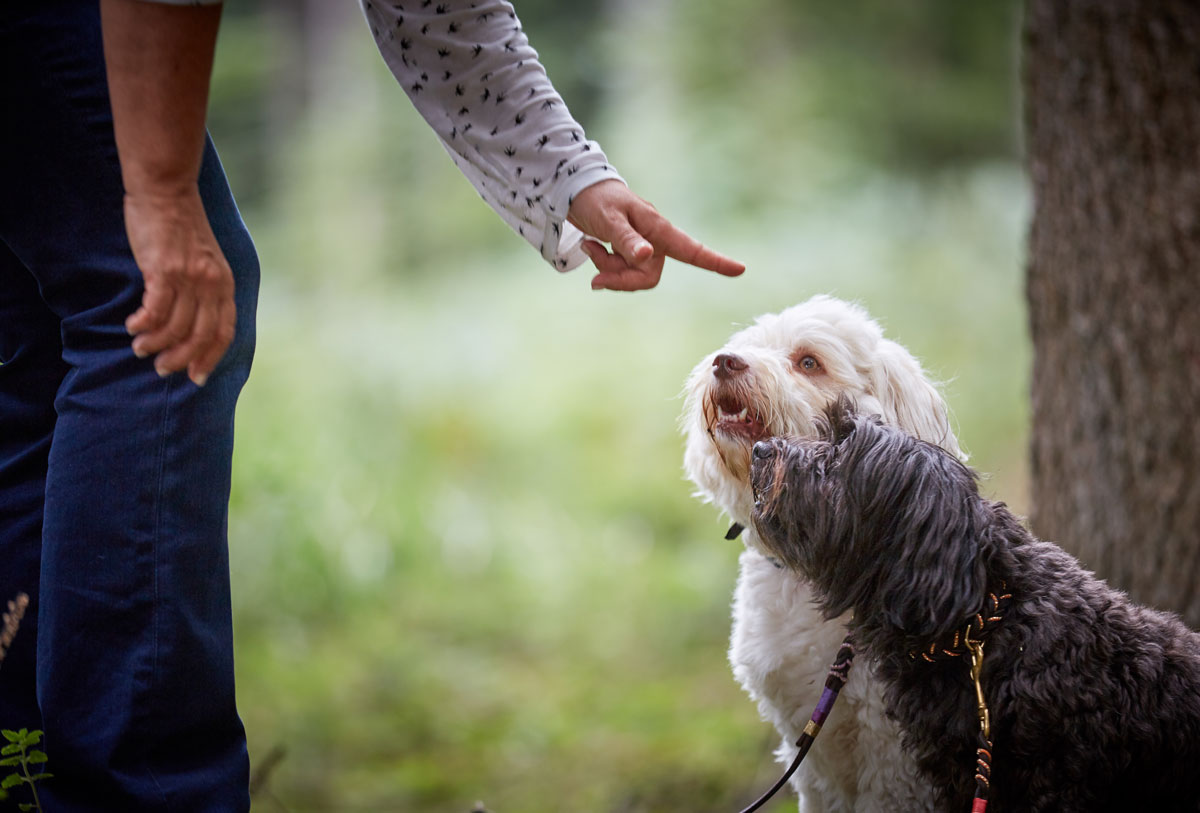Dogs are always learning. Dogs learn from their environment and from the results of their interactions with it. The environment includes everything around them. We are a part of their environment, just as cats, cars, other dogs, sounds, smells and tastes are. Like all animals, dogs zero in on the things in their environment that seem most relevant to them like food, moving objects, and other animals. While investigate their surroundings dogs react and respond to the many stimuli they come into contact with, learning as they go. We can direct what they learn by paying attention to the things that motivate them.
Dogs learn in two basic ways. First, they learn from the consequences to their behavior. Consequences can either be positive, negative, or neutral. Behaviors with positive consequences become strengthened and more frequent. Those that are followed by a negative consequence weaken and become less frequent. Behaviors that result in no relevant changes generally become less frequent over time.
In another kind of learning, dogs form associations between two or more things in their environment. For example, they learn that certain things, leashes for example, reliably predict other things that are positive to them, like walks (access to the out of doors). Associations are also formed between things that predict negative events, as when a dog’s investigation of a cat regularly predicts a swat on the nose. Note that both of the examples above involving associations also involve consequences. Both of these modes of learning occur simultaneously. When we train our dogs with food, for example, we are providing positive consequences for performing specific behaviors. While this is going on, our dogs are forming all sort of positive associations with other things in the immediate environment such as: the training space you are using, the kinds of behaviors you are engaged in, and even you as the trainer!
Since we know that dogs learn in these ways, we can use these principles to teach them to behave in mutually beneficial ways (good for them AND good for us!).
One of the most effective ways to do this is to reinforce behavior you like while ignoring or redirecting behavior you don’t particularly care for. Rewards are positive consequences to behavior. Rewarding behavior you like means that you will see more of it again in the future. These behaviors become stronger and more reliable as they become part of your dog’s repertoire with continued reinforcement.
Take time during your day to provide rewards for behavior you want your dog to keep doing. Make it a habit, for example, to practice a sit stay before putting your dog’s food bowl down during meals. Practice the sit stay before going out the door on a walk. In this way you can be your dog’s guide as they learn to negotiate their surroundings with your help as you communicate using positive consequences for good behaviors. Your dog will strongly tend to repeat behaviors that are rewarded over time.
When your dog does something you don’t want them to do again in the future, try ignoring the behavior. This technique works very well with behavior that is easily rewarded by our attention, like jumping up or barking at us to get us to do something for them (like getting a chew bone or treat). Ignoring is probably the most underused training technique. Maybe because we humans rely so much on language. It’s very easy for us to communicate to another human that we’d like them to stop doing something. Unfortunately, our dogs don’t use language to communicate. It’s far more effective to provide the appropriate consequence, such as ignoring the behavior (withholding reinforcement), and this is a very powerful way to help our dogs learn.
Many unwanted behaviors can’t be ignored however. Changing some behaviors is faster if we can provide our dogs with some kind of legal outlet for the same behavior. Dogs that like to chew, for example, can be taught to chew only legal items like chew bones, Kongs and bully sticks. To be sure that they don’t accidentally chew other “illegal” objects, it is necessary to put these other things away so that the dog does not learn on their own that chewing a shoe, say, is just as much fun. With access to legal outlets, your dog will learn that chewing Kongs works great, while every time he tries to chew an “illegal” object he is redirect back to the Kong and the “illegal” object is no longer available to chew on.
Want to learn more? Contact us to learn more about our group classes, private training, and other services.



